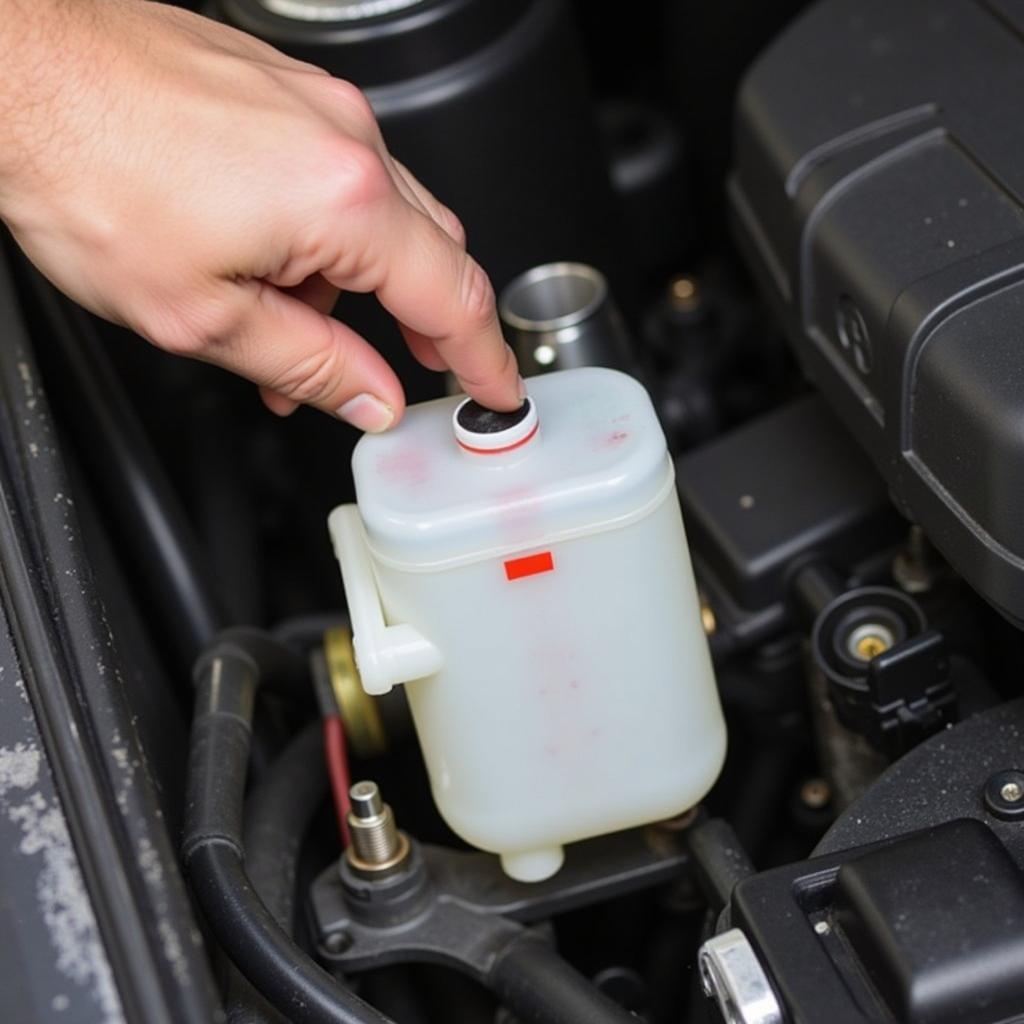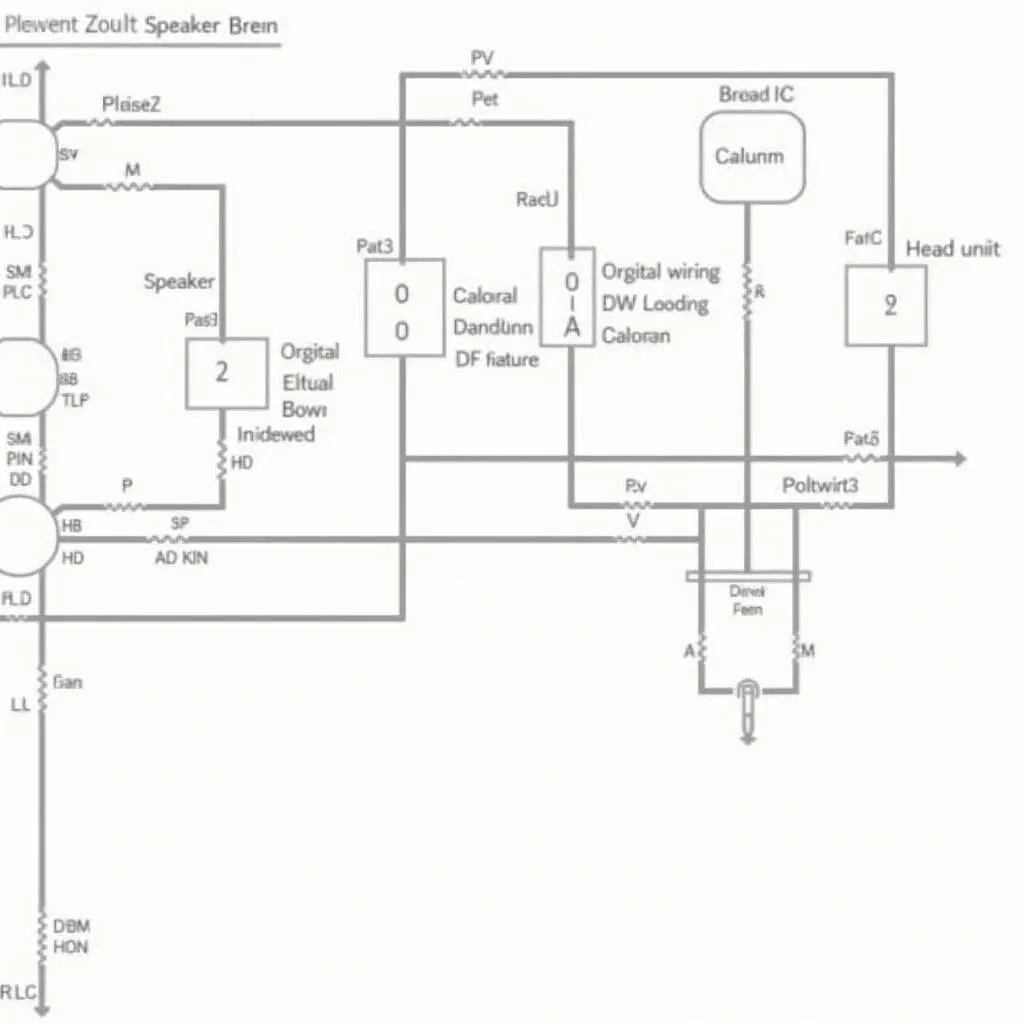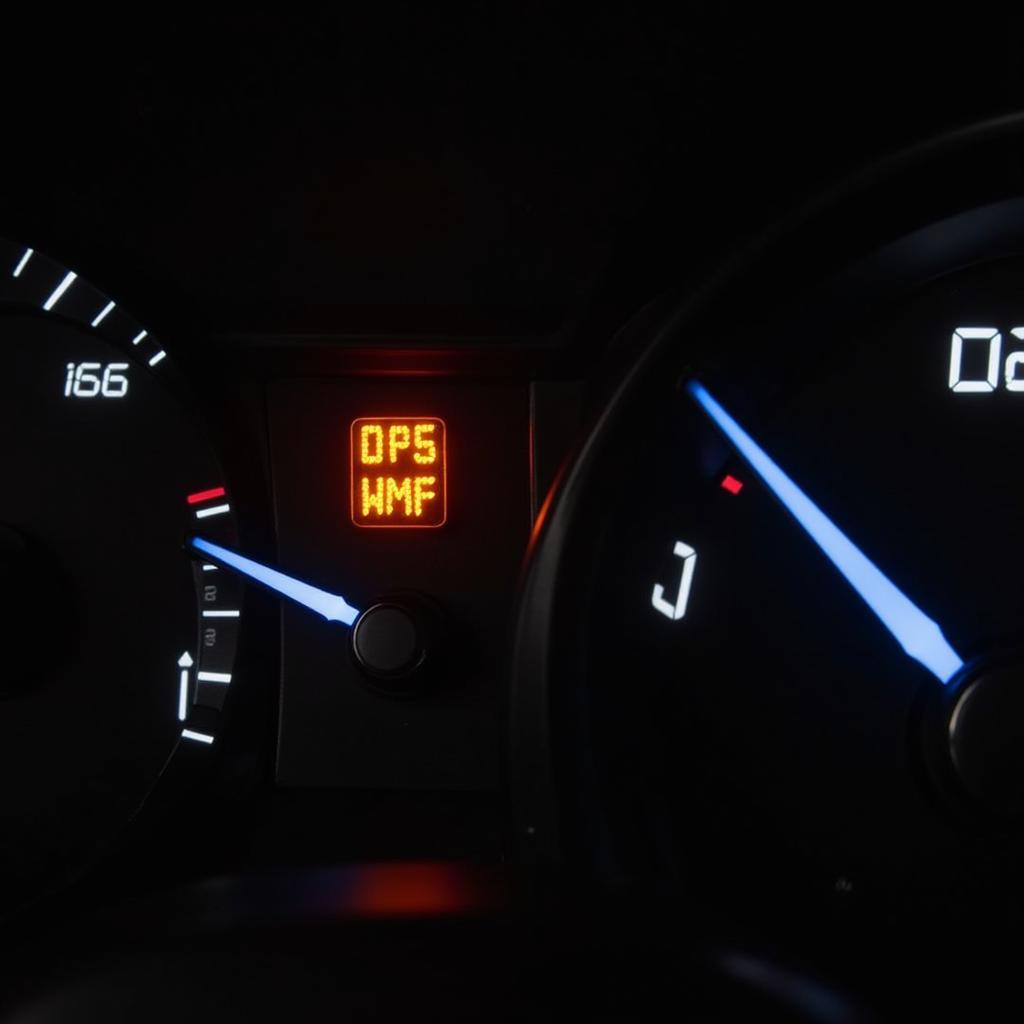The brake warning light on your dashboard is a crucial safety indicator. Understanding why it illuminates can save you from costly repairs and potentially dangerous situations. This article delves into the various reasons your brake warning light might come on, from simple fixes to more complex issues requiring professional attention.
Your brake warning light is designed to alert you to potential problems within your braking system. Ignoring it could compromise your safety and lead to serious accidents. This light can indicate anything from low brake fluid to worn brake pads, a malfunctioning ABS system, or even a faulty brake light bulb. Identifying the root cause is the first step towards resolving the issue.
Similar to a flashing brake warning on my 2005 dodge ram 3500 diesel, there are a few basic checks you can carry out yourself before seeking professional help.
Common Causes of an Illuminated Brake Warning Light
Low Brake Fluid
One of the most common reasons for the brake warning light is low brake fluid. This usually indicates a leak somewhere in the system. Check your brake fluid reservoir. If the level is low, top it off and monitor it closely. If it drops again quickly, you likely have a leak that needs immediate attention.
Worn Brake Pads
Brake pads wear down over time, and when they reach a certain point, a sensor triggers the warning light. This is a crucial safety feature, as worn brake pads significantly reduce braking effectiveness.
Faulty ABS System
The Anti-lock Braking System (ABS) helps prevent wheel lockup during hard braking. If there’s a problem with the ABS, the warning light might come on. This could be due to a sensor issue, a malfunctioning pump, or a problem with the ABS control module.
Parking Brake Engaged
Sometimes, the simplest explanation is the correct one. If your parking brake is even slightly engaged, the brake warning light might illuminate. Make sure the parking brake is fully released.
 Checking Low Brake Fluid Level in Car
Checking Low Brake Fluid Level in Car
Why Would My Brake Warning Light Keep Coming On Intermittently?
An intermittent brake warning light can be particularly frustrating. It suggests an issue that isn’t constant, which can make diagnosis more challenging. Possible causes include:
Loose or Damaged Wiring
A loose or damaged wire connected to the brake system components can cause the warning light to flicker or come on intermittently.
Faulty Brake Light Bulb
A burned-out brake light bulb can sometimes trigger the brake warning light, particularly in newer vehicles. Check all your brake lights and replace any burned-out bulbs.
Brake Warning Sensor Malfunction
The brake warning sensor itself could be malfunctioning, sending erroneous signals even when there’s no actual problem.
Diagnosing and Fixing the Problem
This is similar to why would my brake warning l light keep coming on, in that a professional diagnosis is recommended for complex issues.
DIY Checks
You can perform some basic checks yourself, such as checking the brake fluid level, parking brake engagement, and brake light bulbs.
Professional Diagnosis
For more complex issues, such as ABS problems or suspected leaks, it’s crucial to seek professional help. A qualified mechanic can diagnose the problem accurately using specialized diagnostic tools and perform the necessary repairs.
When to Seek Immediate Attention
If you experience any of the following alongside the illuminated brake warning light, seek immediate attention:
- Soft or spongy brake pedal
- Grinding or squealing noises when braking
- Pulling to one side when braking
- Loss of braking power
Conclusion
The brake warning light is a vital safety feature. Understanding why it comes on is crucial for maintaining your vehicle’s safety and preventing potential accidents. While some issues, like low brake fluid, can be addressed with simple checks, others require professional attention. Never ignore the brake warning light; addressing the underlying issue promptly ensures safe and reliable braking performance. Don’t delay—your safety depends on it. Have your brakes inspected by a qualified technician if you’re unsure about the cause of the illuminated warning light.
Just as with a prius brakes traction warning, understanding what can trigger this warning is key.
FAQ
- What does the brake warning light look like? It’s typically a circular symbol with an exclamation mark inside, often in parentheses. It can be red or amber, depending on the vehicle.
- Can I drive with the brake warning light on? It’s not recommended. While it might be possible to drive short distances, it’s crucial to identify and fix the underlying problem as soon as possible.
- How much does it cost to fix a brake warning light issue? The cost varies depending on the cause. A simple brake fluid top-up is inexpensive, while more complex repairs like ABS system repairs can be significantly more costly. Similar to a brake warning resistor diode assembly location 1997 f150, locating the issue is the first step.
- How often should I check my brake fluid? It’s a good idea to check your brake fluid level every month or two, or as part of your regular vehicle maintenance.
- What should I do if my brake warning light comes on while driving? Pull over safely as soon as possible and assess the situation. If your brakes feel compromised, do not continue driving. Call for roadside assistance.
- Can a faulty sensor cause the brake warning light to come on? Yes, a malfunctioning brake warning sensor can trigger the light even if there’s no actual problem with the brakes.
- How do I know if my brake pads are worn? Besides the warning light, signs of worn brake pads include a squealing or grinding noise when braking, a longer stopping distance, and a vibrating brake pedal. This also relates to questions regarding why would brake light and abs warning.


